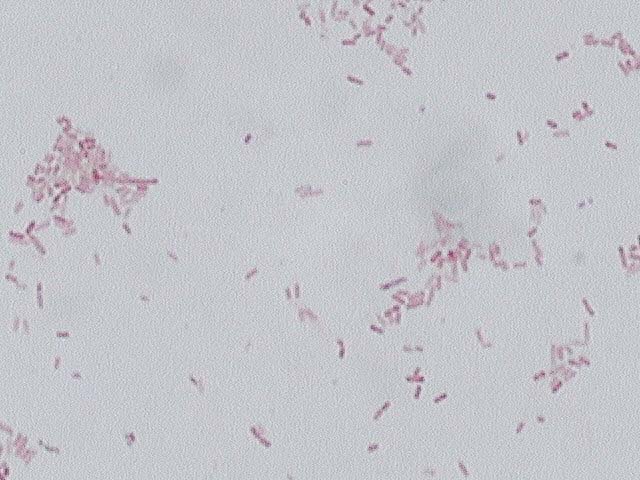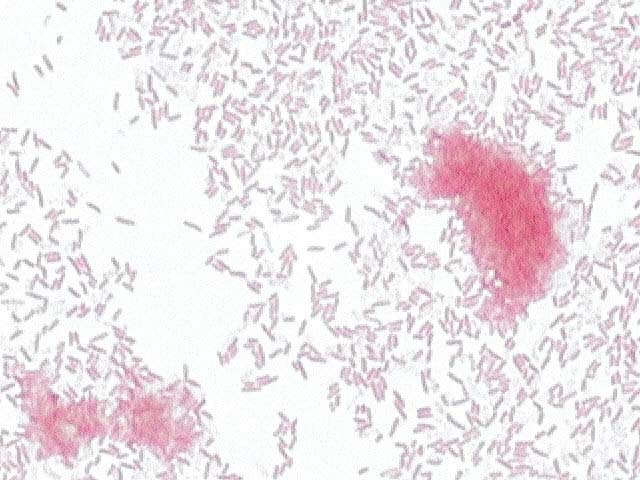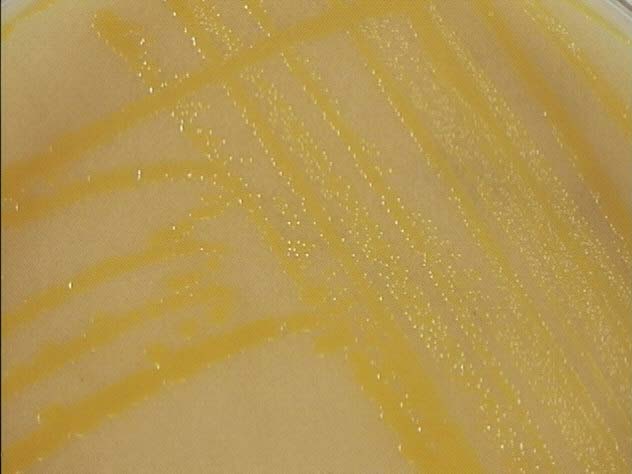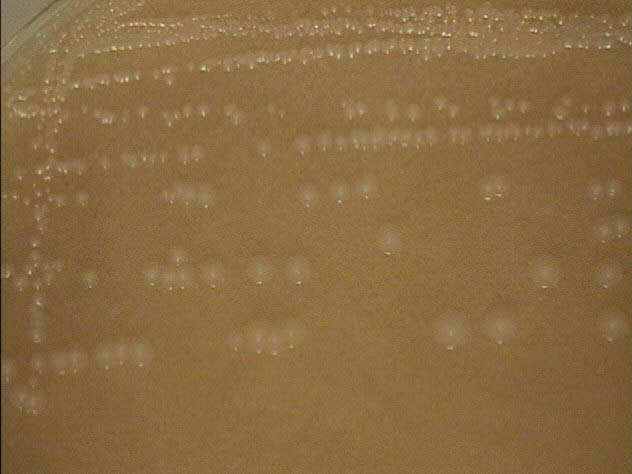- Discussion
 |
Organism
|
Result
|
|
|
pos1
|
YEAST
|
||
|
pos2
|
YEAST
|
||
|
pos3
|
YEAST | ||
|
This
is actually yeast. On GYC Standard medium.
|
|||
Pos1, pos2 and pos3, upon microscopic observation, turned out to be yeasts. Their macroscopic morphology strongly resembled that of Gluconobacter but the cells were too large to be bacteria.
Pos4 and pos5 strongly resemble Gluconobacter in the above chemical tests.
Gluconobacter is supposed to grow in pale, milky white colonies. Pos4 is slimy and yellow and does not fit the stated morphology. Pos5, on the other hand, grew in small regular circles and had a pink tint on mannitol and MacConkey's medium. Bergey's Manual said that some Gluconobacter strains could be pink, and thus pos5 fits the description most properly.
 |
 |
||
|
pos4
gram stain
|
pos5
gram stain
|
||
 |
 |
||
|
pos4
on Frateur's medium
|
pos5
on Frateur's medium
|
It can definitely be said that this has been a learning experience. We have determined successfully the steps one needs to follow in order to isolate Gluconobacter. Although not all of the results matched the genus Gluconobacter, we feel confident that we have isolated an organism very close to it. We learned that any medium that calls for calcium carbonate needs extremely well ground crystals, as otherwise they will not stay in the medium but will settle to the bottom of the plate, where growing bacteria cannot reach it.
- Ecological and Biotechnological Importance
Gluconobacter is usually found in fruits and flowers, as well as baker's yeast, beer, wine and cider. Strains are used industrially to produce L-sorbose from D-sorbitol, D-gluconic acid, 5-keto- and 2-ketogluconic acids from D-glucose, and dihydroxyacetone from glycerol. Recently the strain Gluconobacter oxydans has been used as a bio-sensor in the mass-production of ethanol. Certain strains will detect the presence of xylose, a valuable coproduct in the ethanol production process, more efficiently, and therefore more cost-effectively, than others. A protocol such as ours for isolating strains of Gluconobacter could be valuable in the continuing search for new and more efficent strains.